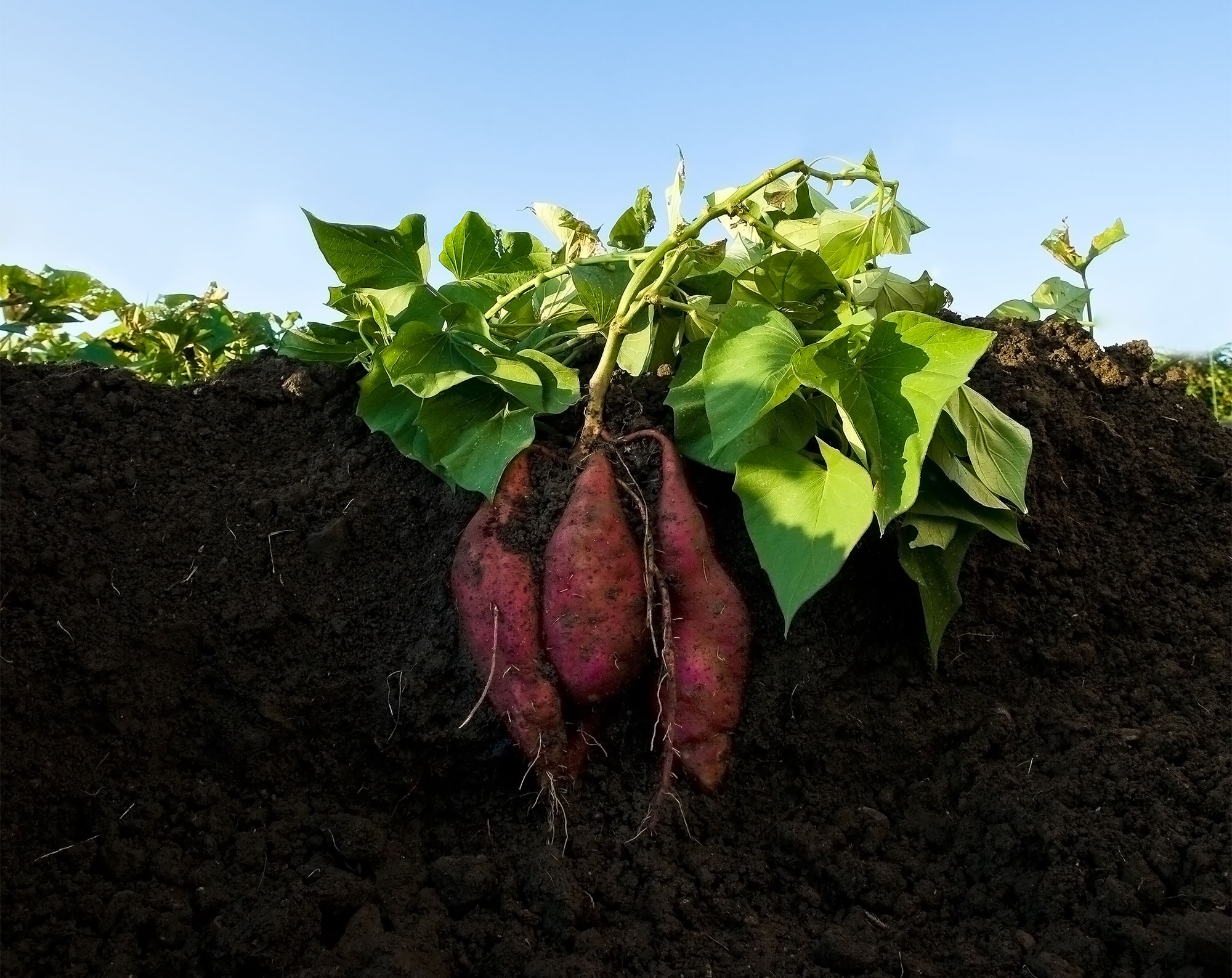
Sweet Potato
Ipomoea batatas
Basic Information
🌿 Family: Convolvulaceae🗺️ Zone: 8-11
Other Names:
- Kumara
🌡️ Ideal Temperature : 75°F°F – 95°F°F
🔥 Heat Tolerance: Up to 100°F°F
❄️ Cold Tolerance: Down to 55°F°F
🌱 Type: Perennial
Layers
- Ground Cover
Description
Sweet potato is a herbaceous perennial vine native to tropical regions of the Americas. It features heart-shaped or lobed leaves and bears funnel-shaped flowers, typically in shades of pink or violet. The plant is primarily cultivated for its edible tuberous roots, which vary in color from white and yellow to orange and purple, depending on the cultivar.
🌞💧 Sun and Water Requirements:
Sweet potatoes thrive in full sun, requiring at least 6 hours of direct sunlight daily. They prefer well-drained, loamy to sandy soils with a slightly acidic to neutral pH (5.5 to 6.5). Consistent moisture is essential, especially during the establishment phase and root development, but waterlogging should be avoided to prevent root rot.
✂️🫘 Methods to Propagate:
Propagation is typically achieved through "slips," which are shoots grown from mature sweet potato tubers. To produce slips:
1. Select healthy, disease-free tubers.
2. Place them in a warm, moist environment, partially submerged in water or soil.
3. After several weeks, sprouts (slips) will emerge.
4. Once slips reach approximately 15 cm (6 inches) in length, they can be gently removed and planted directly into the soil.
🧑🌾👩🌾 When to Harvest:
Harvesting usually occurs 90 to 170 days after planting, depending on the variety and growing conditions. Indicators for harvest include yellowing leaves and the size of the tubers. It's advisable to harvest before the first frost, as cold temperatures can damage the tubers. Carefully dig up the tubers to avoid bruising, and cure them in a warm, humid environment for about 7 to 10 days to enhance sweetness and storage potential.
Purpose
- Edible: Sweet potato tubers are a nutritious food source, rich in vitamins A and C, fiber, and antioxidants. They can be baked, boiled, mashed, or fried, and are used in both sweet and savory dishes.
- Ground Cover: The dense, sprawling vines provide excellent ground cover, suppressing weed growth and reducing soil erosion.
- Animal Fodder: In some regions, sweet potato vines and tubers are used as fodder for livestock, offering a valuable source of nutrients.